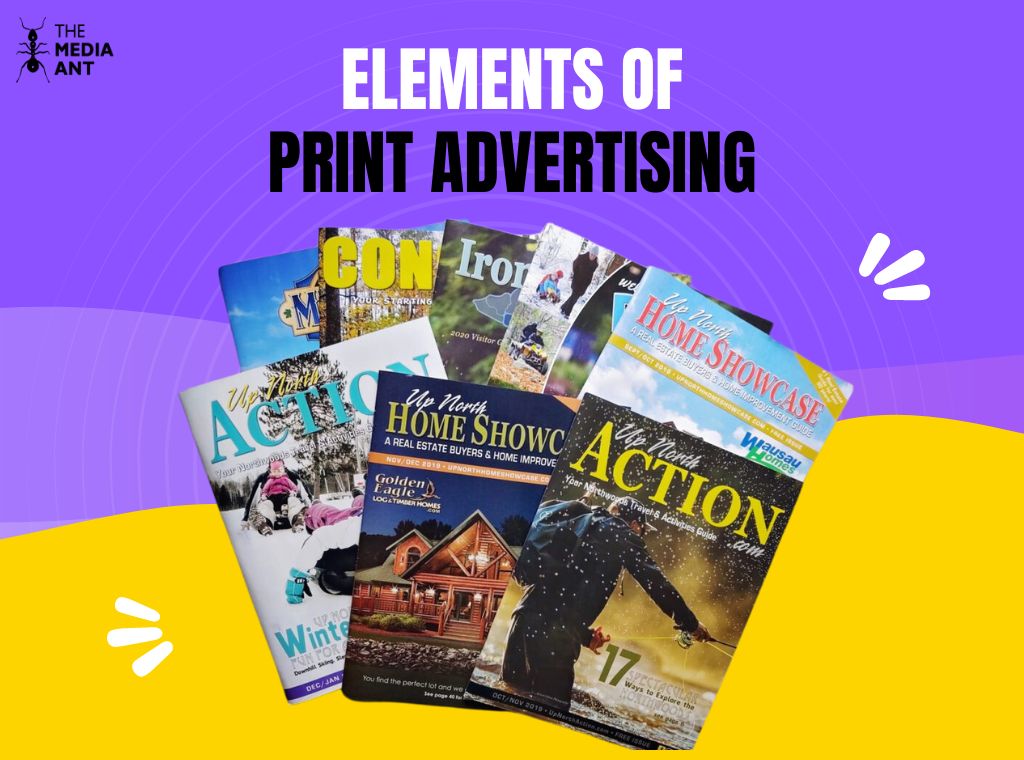In today’s fast-paced digital world, the enduring power of print advertising continues to hold significant value for marketers. Print advertising encompasses a wide array of materials, including newspapers, magazines, brochures, flyers, posters, and billboards. Despite the proliferation of digital marketing channels, print advertising remains a staple in many marketing strategies due to its tangible nature and ability to captivate audiences in unique ways. In this comprehensive guide, we will delve into the essential elements that contribute to the effectiveness of print advertising campaigns, providing insights and strategies for marketers looking to leverage this medium successfully.
Elements of Print Advertising
1) Visual Elements of Print Advertising
Design Layout
Effective print advertisements often feature a well-thought-out layout that grabs attention and guides the reader’s eye through the content. A balanced layout utilizes white space, imagery, and text in a harmonious manner, ensuring clarity and visual appeal.
Graphics and Images
High-quality graphics and images play a crucial role in print advertising, serving to capture attention and convey messages visually. Marketers must carefully select visuals that align with their brand identity and resonate with their target audience.
Typography
The choice of fonts and typography in print advertising can significantly impact readability and message delivery. Fonts should be selected based on their appropriateness for the brand and the overall design aesthetic, with an emphasis on legibility and hierarchy.

2) Copywriting in Print Advertising
Compelling headlines are essential for grabbing the reader’s attention and enticing them to engage further with the advertisement. Effective headlines often employ persuasive language, evoke emotion, or pose intriguing questions to pique curiosity.
Body Copy
The body copy of a print advertisement should concisely communicate the key message or offer while highlighting the benefits of the product or service. Clear and persuasive language, coupled with strategic formatting and organization, can enhance readability and impact.
Call-to-Action (CTA)
A strong call-to-action is critical for prompting readers to take the desired action, whether it’s making a purchase, visiting a website, or contacting the company. The CTA should be clear, compelling, and prominently displayed within the advertisement.
3) Branding Elements in Print Advertising
Logo Placement
The placement of the brand logo within a print advertisement should be strategic, ensuring visibility without overwhelming other elements. Consistency in logo placement helps reinforce brand recognition and identity across various marketing materials.
Brand Colors and Consistency
Consistent use of brand colors is essential for maintaining brand identity and visual cohesion across print advertisements. Marketers should adhere to brand guidelines when selecting colors and ensure consistency in their application.
4) Paper and Printing Quality
Paper Selection
The choice of paper stock can significantly impact the look and feel of a print advertisement. Factors such as weight, texture, and finish should be carefully considered to align with the desired aesthetic and target audience preferences.
Printing Techniques
Various printing techniques, such as offset printing, digital printing, and specialty finishes, can be employed to enhance the visual impact of print advertisements. Marketers should explore different printing options to achieve the desired effects and ensure high-quality reproduction of graphics and text.
Read about the 7 types of print advertising
5) Audience Targeting and Placement
Understanding the demographics, interests, and preferences of the target audience is essential for creating effective print advertisements. Marketers should conduct thorough audience research to tailor their messaging and design to resonate with specific segments.
Placement Strategy
Strategic placement of print advertisements in relevant publications or locations is key to maximizing exposure and engagement. Factors such as circulation, audience demographics, and distribution channels should be taken into account when determining placement strategies.
6) Measuring Success and ROI in Print Advertising
Tracking Response Rates
Implementing tracking mechanisms such as QR codes, unique URLs, or custom phone numbers can help marketers measure the effectiveness of print advertisements and track reader response rates.
Monitoring Sales and Conversions
Linking print advertisements to sales data and conversions allows marketers to measure the return on investment (ROI) of their print advertising efforts. By analyzing sales trends and correlating them with advertising campaigns, marketers can assess the impact of print advertising on business outcomes.

Conclusion
Print advertising remains a valuable and effective marketing tool for businesses seeking to reach and engage with their target audience. By understanding and optimizing the essential elements of print advertising discussed in this guide, marketers can create compelling and impactful campaigns that resonate with consumers and drive business results. Despite the rise of digital marketing channels, print advertising continues to offer unique advantages in terms of tangibility, credibility, and audience engagement. As part of a comprehensive marketing strategy, print advertising can help businesses stand out in a crowded marketplace and achieve their marketing objectives.
FAQs Related to Elements of Print Advertising
Why is print advertising still relevant in the digital age?
Despite the rise of digital marketing channels, print advertising remains relevant due to its tangible nature, ability to target specific audiences, and credibility. Print ads can also stand out in a cluttered digital environment and provide a unique brand experience.
How important is design layout in print advertising?
Design layout is crucial in print advertising as it determines how the ad visually communicates with the audience. A well-thought-out layout can grab attention, guide the reader’s eye, and enhance overall readability and impact.
How can I ensure brand consistency in print advertising?
Brand consistency in print advertising can be achieved by using the brand’s logo, colors, and fonts consistently across all materials. Adhering to brand guidelines and maintaining visual cohesion helps reinforce brand identity and recognition.
How can I measure the effectiveness of my print advertising campaigns?
Effectiveness of print advertising campaigns can be measured through tracking response rates using methods like QR codes, unique URLs, or custom phone numbers. Monitoring sales and conversions linked to print ads also helps assess ROI.
Are there any best practices for audience targeting and placement in print advertising?
Best practices for audience targeting in print advertising include conducting thorough audience research to understand demographics and preferences, and selecting relevant publications or locations for placement based on circulation, demographics, and distribution channels.





